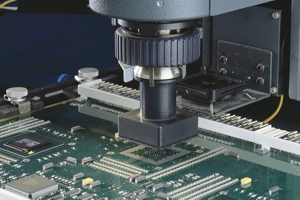Abstract
Ball Grid Array (BGA) rework is a complex and challenging procedure performed at assembly facilities and repair depots worldwide. The success of BGA rework largely depends on the technician's skills and knowledge. Despite well-defined and long-established procedures, six common mistakes exist that can be costly and lead to reduced yields and increased rework cycles.
This paper identifies these mistakes and provides valuable insights into preventing them. By avoiding these pitfalls, assembly facilities can achieve a successful, robust, and repeatable BGA rework process, resulting in higher yields and reduced costs for a better bottom line.
Introduction
BGA rework is a critical process in the electronics industry, especially given the increasing complexity and miniaturization of electronic components. The correct execution of BGA rework demands a combination of technical expertise and practical experience. This white paper illuminates the most common mistakes in BGA rework and emphasizes the significance of addressing them to achieve optimal results.
Mistake #1: Inadequate Operator Training
A skilled and knowledgeable BGA rework technician is the cornerstone of a successful rework process. Proper operator training is essential to ensure that technicians understand the materials they work with, the tools involved, and the intricate process steps. A well-trained technician can effectively evaluate a BGA rework situation and identify deviations from the desired process. Recognizing early warning signs helps avoid potential issues and reduces the likelihood of rework failures.
Mistake #2: Inappropriate Equipment Selection
Using the right equipment is imperative for successful BGA rework. The chosen equipment must possess the sophistication, flexibility, and capability to execute a controlled, predictable, and repeatable process. Closed-loop thermal sensing and control ensure precise temperature management during the rework process. Moreover, the equipment should be robust enough to deliver heat as required, handle products during removal and replacement, and adhere to industry standards. Cutting corners with equipment selection can lead to compromised results and increased costs.
Mistake #3: Poor Profile Development
Developing a proper BGA rework profile is just as crucial as developing an assembly reflow profile. The BGA rework profile must closely mirror the assembly reflow profile to achieve a successful and repeatable process. Inadequate thermal profiles can lead to damage to the assembly or BGA component, necessitating additional rework cycles and possibly impacting adjacent components. Developing precise thermal profiles using correct thermocouple placement and data analysis is essential for preventing such issues.
Mistake #4: Improper Preparation
Thorough preparation is essential before initiating the BGA rework process. Adequate preparation includes eliminating moisture from the BGA device and the board assembly to prevent issues like "popcorning." Protecting nearby heat-sensitive components is crucial to prevent damage or inadvertent reflow. Decisions about solder paste usage, stencil selection, and appropriate chemistries and alloys must be made in advance to streamline the rework process. Accurate assessment of various factors, such as solder ball size and pad condition, is crucial for successful rework.
Mistake #5: Collateral Heat Damage
Inadequate heat management during BGA rework can lead to collateral damage to adjacent components. This damage may manifest as oxidation, de-wetting, pad and lead damage, wicking, starved joints, and even component damage. Technicians must be vigilant about heat migration beyond the targeted BGA component and take measures to minimize its impact. This requires a well-developed thermal profile and tight process control to ensure that neighboring components remain unaffected during rework.
Mistake #6: Insufficient Post-Placement Inspection
X-ray inspection machines provide a crucial window into the world beneath a BGA component. Issues such as excessive voiding and poor placement or alignment can be immediately detected with the help of X-ray inspection. However, it is crucial to have properly trained personnel to interpret and understand X-ray images accurately. A skilled operator can leverage the full potential of X-ray inspection, ensuring maximum benefits from this valuable and indispensable equipment investment.
Conclusion
BGA rework is a complex process that requires a combination of scientific understanding and artistic finesse. By addressing and avoiding the six most common mistakes outlined in this white paper, assembly facilities and repair depots can significantly enhance their BGA rework processes. Adequate operator training, appropriate equipment selection, precise profile development, thorough preparation, prevention of collateral heat damage, and careful post-placement inspection are vital components of a successful BGA rework strategy.
Implementing these measures will lead to higher yields, reduced costs, and a more robust bottom line, positioning organizations for success in the dynamic electronics industry.














